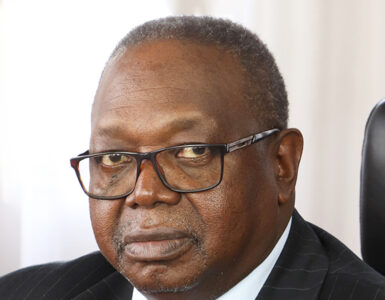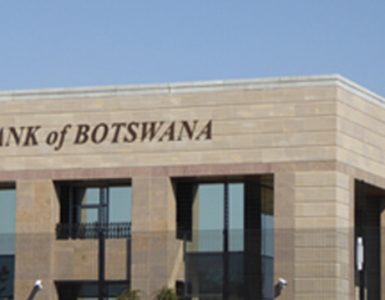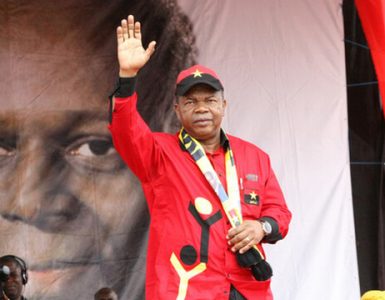Lesotho’s total public debt is projected to have increased from an average of 39.9% of GDP from FY2015/16 to FY2017/18, to an estimated 46.8% of GDP in FY2018/19[5]. The total public debt is projected to increase further to an average of 50.9% of GDP over the forward-looking medium-term period from FY2019/20 to FY2023/24[6]. At these levels of the public debt remain below the SADC prudential threshold of 60.0% of GDP[7]. In addition, total public debt has not deviated much from Lesotho’s domestic threshold of 40.0% of GDP in the period prior to FY2018/19 which makes its debt sustainable[8].

The foregone analysis of total public debt provides a general perspective on the macro sustainability of Lesotho’s public debt. However, a deeper analysis of other sustainability indicators is needed to clearly understand the underlying drivers for sustainability of Lesotho’s public debt. Lesotho’s real GDP growth rate averaged 2.0% from 2015 to 2017 compared to the effective interest rate on public debt which averaged 1.8%[9]. In 2018, Lesotho’s GDP growth rate is projected to have increased to 2.9% compared to the effective interest rate on public debt of 1.7%[10]. This means that the cost of servicing Lesotho’s public debt has decreased which supports debt sustainability. In the forward-looking medium-term from 2019 to 2023 real GDP growth is projected to decrease to 2.4% compared to an effective interest rate of 1.9%[11]. Real GDP growth has outperformed the effective rate on public debt for most of the years in the periods reviewed above. Therefore, public debt-servicing costs are expected to continue decreasing in relative terms which should provide room for the government of Lesotho to increase its capital expenditure or accumulate fiscal buffers.
While Lesotho’s public debt remains sustainable, public debt-servicing costs are projected to increase slightly. Public debt-servicing costs are projected to have decreased from an average of 4.8% for 2015 to 2017, to 4.0% in 2018[12]. Public debt-servicing costs are projected to increase to an average of 6.3% from 2019 to 2023[13]. As indicated in the introduction, Lesotho faces slow economic growth and persistent fiscal and current account deficits which are affected by the lower remittances and constant fall in SACU revenues. With the slow GDP growth, the government is forced to continue borrowing and public debt-servicing costs will continue increasing due to rising levels of public debt and low fiscal revenues caused by slow GDP growth.
In conclusion therefore, Lesotho’s public debt has been sustainable based on debt-to-GDP ratio and real GDP growth versus effective interest rates from FY2015/16 to 2017/18. Due to the relatively lower effective interest rate on public debt, Lesotho’s debt-to-GDP ratio has not deviated much from the country’s threshold of 40.0% and still remains well below the SADC ceiling of 60.0%. As an enclave of South Africa, Lesotho’s economic activities remain highly integrated to its neighbour making the country susceptible to external shocks that it can hardly control.
For the sustainability of Lesotho’s public debt, authorities should maintain fiscal discipline; peace and stability; as well as encouraging domestic production to stimulate economic growth. With improved GDP growth Lesotho will reduce the need for incurring public debt to finance its fiscal and current account deficits. The GoL should also relook at its financing mix with the aim to diversify it to reduce exposure to external shocks by increasing domestic borrowing through Treasury Bills and Treasury Bonds. In addition to that, there is a need for a sizable grant component in external debt financing mix to preserve the low risk of debt distress.
[1] GoL 2017. 2016/17 Annual Public Debt Bulletin, Ministry of Finance for the Kingdom of Lesotho: Maseru. Available At: http://www.finance.gov.ls/ [Last Accessed: 13 January 2019].
[2] GoL 2017. 2016/17 Annual Public Debt Bulletin, ibid.
[3] GoL 2017. 2016/17 Annual Public Debt Bulletin, ibid.
[4] GoL 2017. 2016/17 Annual Public Debt Bulletin, ibid.
[5] IMF 2019. Kingdom of Lesotho 2019 Article IV Consultation, International Monetary Fund: Washington, D. C. Available At: https://www.imf.org/ [Last Accessed: 18 May 2019]
[6] IMF 2019. Kingdom of Lesotho 2019 Article IV Consultation, ibid.
[7] SADC 2012. Public Debt, on the Southern African Development Community Website, viewed on 19 August 2019, from https://www.sadc.int/..
[8] IMF 2019. Kingdom of Lesotho 2019 Article IV Consultation, ibid.
[9] IMF 2019. Kingdom of Lesotho 2019 Article IV Consultation, ibid.
[10] IMF 2019. Kingdom of Lesotho 2019 Article IV Consultation, ibid.
[11] IMF 2019. Kingdom of Lesotho 2019 Article IV Consultation, ibid.
[12] IMF 2019. Kingdom of Lesotho 2019 Article IV Consultation, ibid.
[13] IMF 2019. Kingdom of Lesotho 2019 Article IV Consultation, ibid.





























